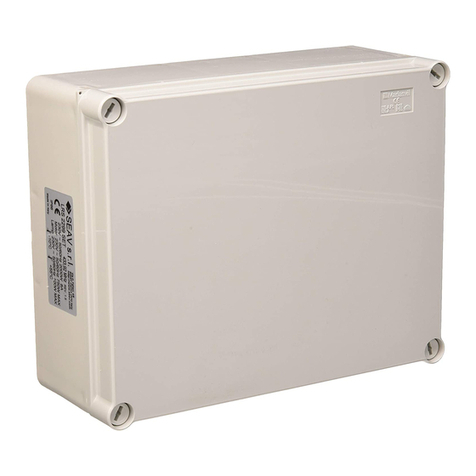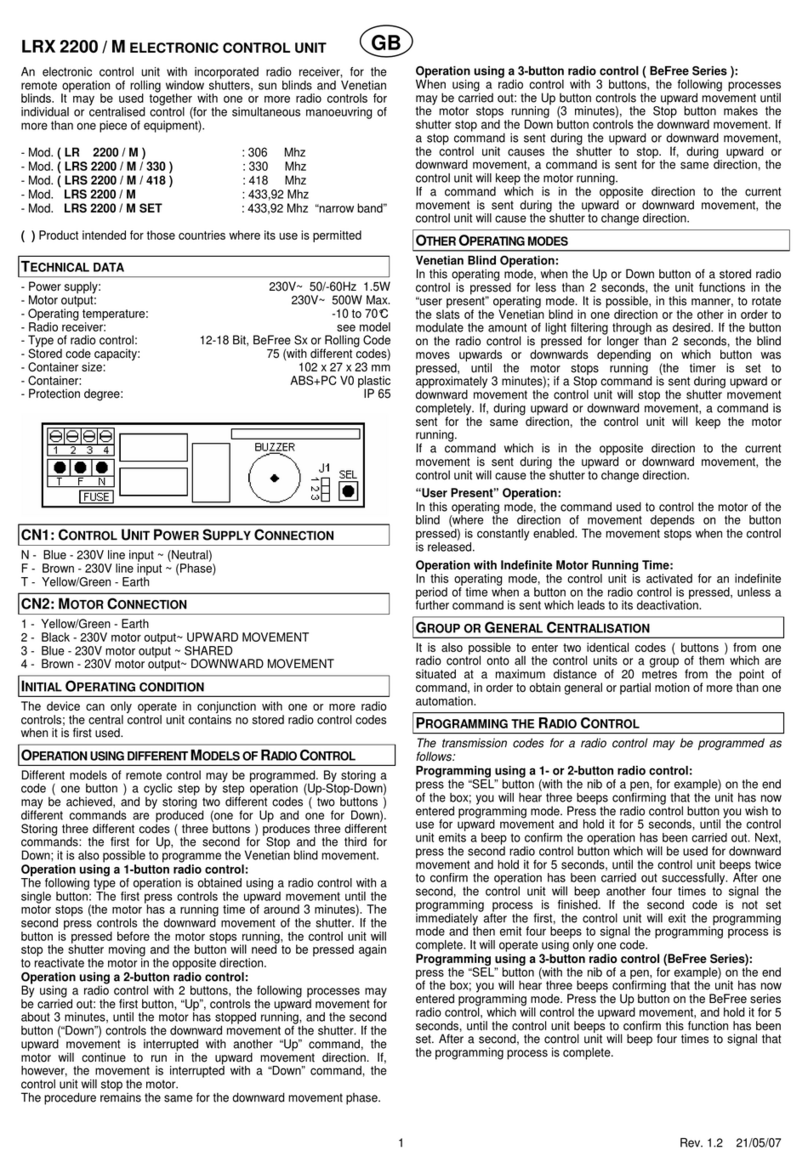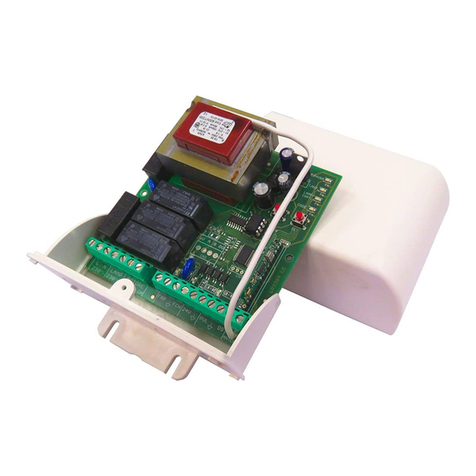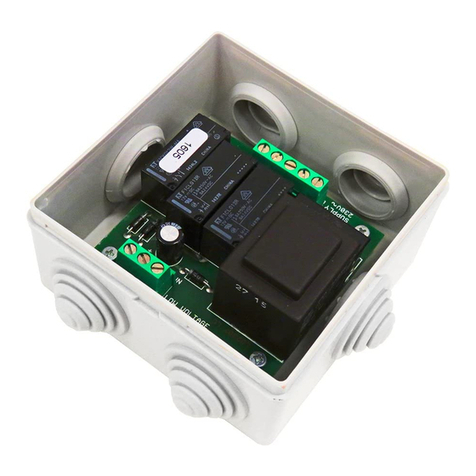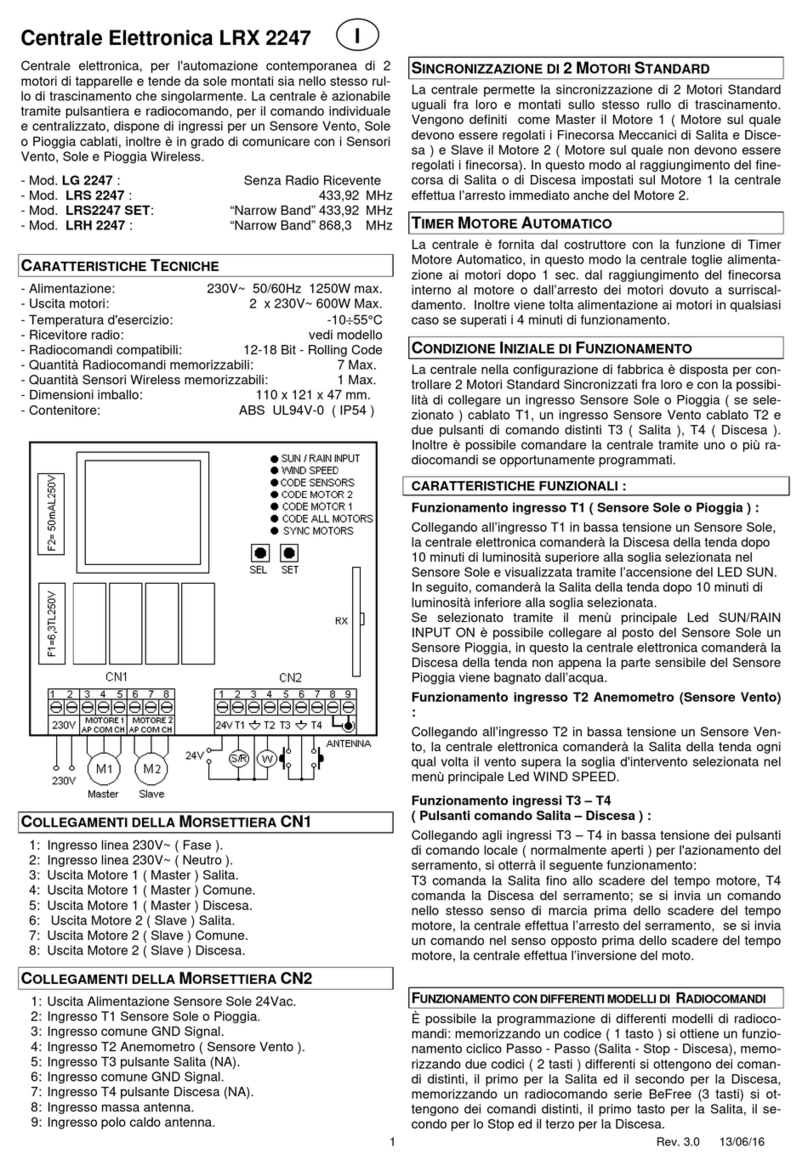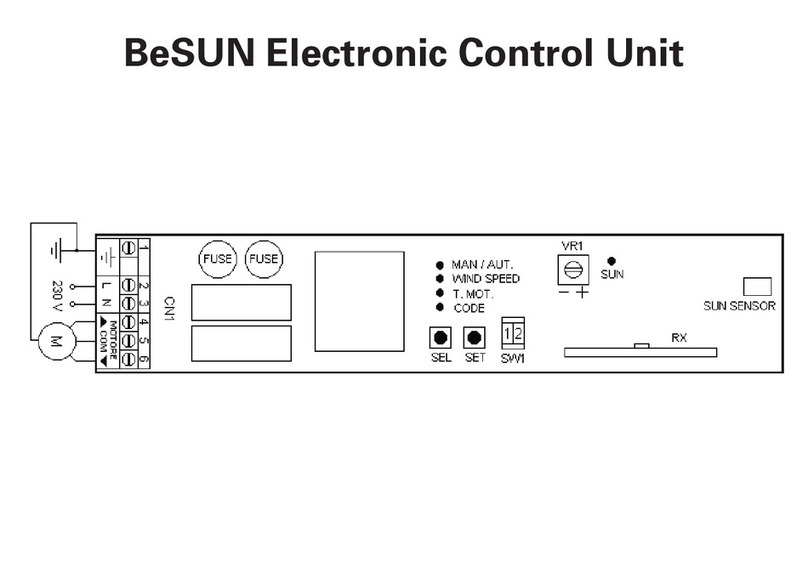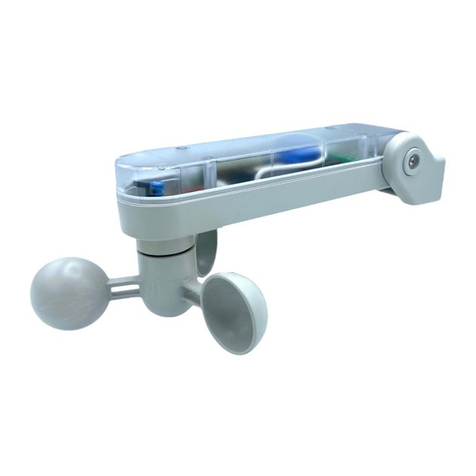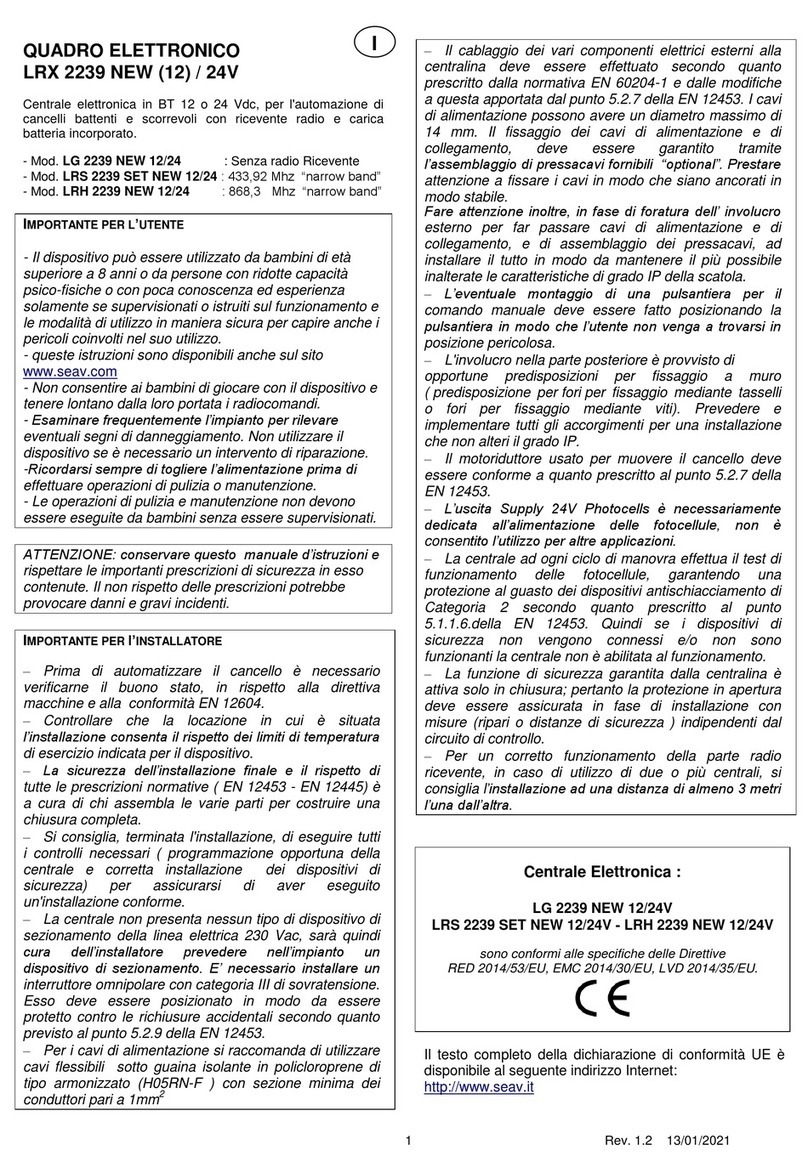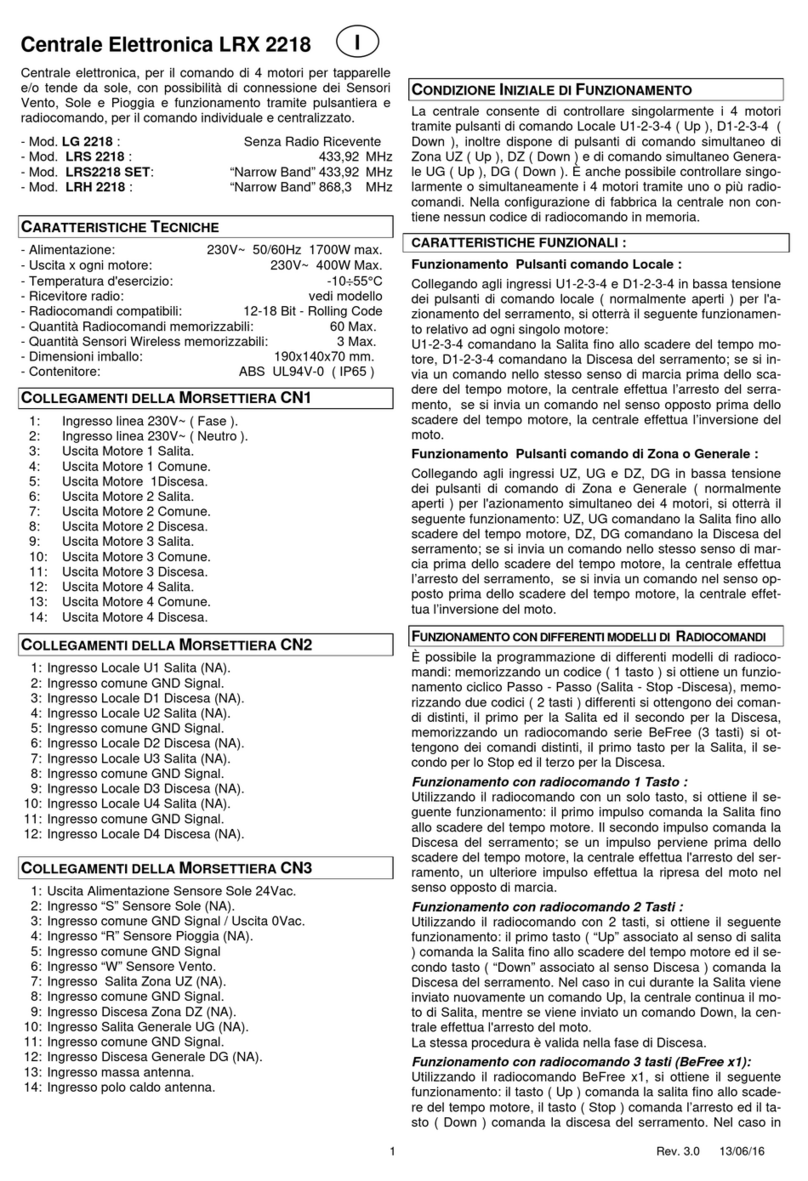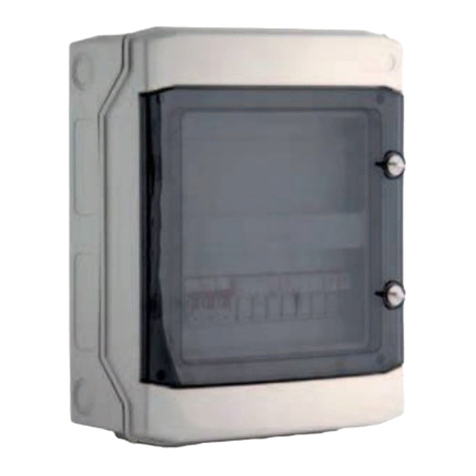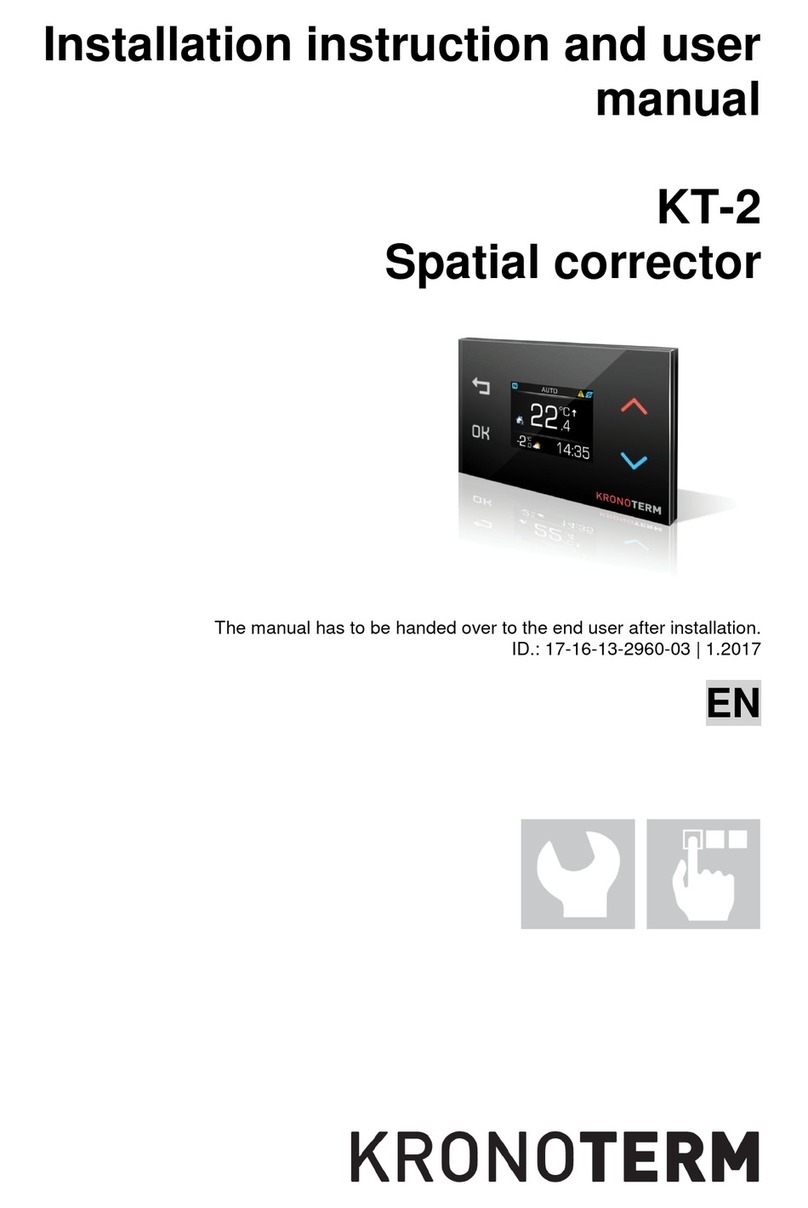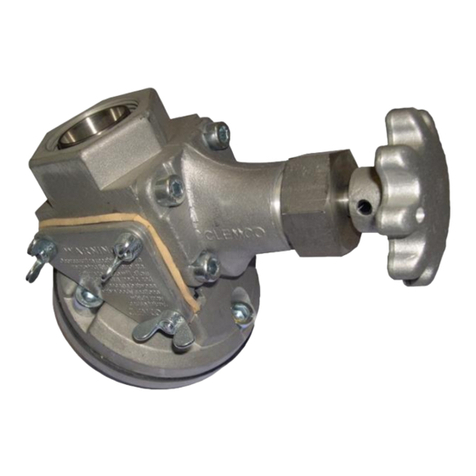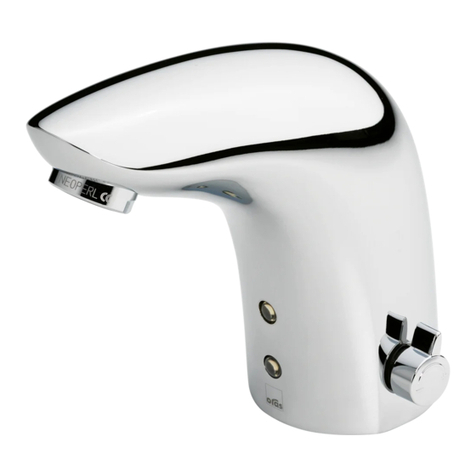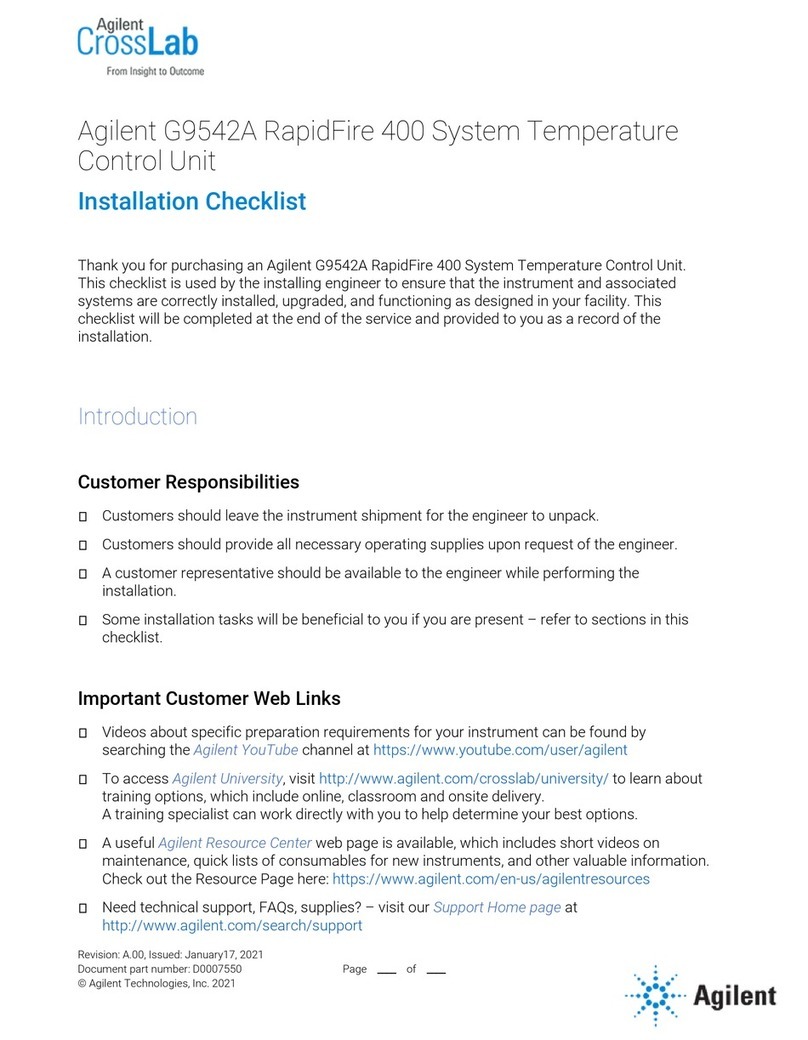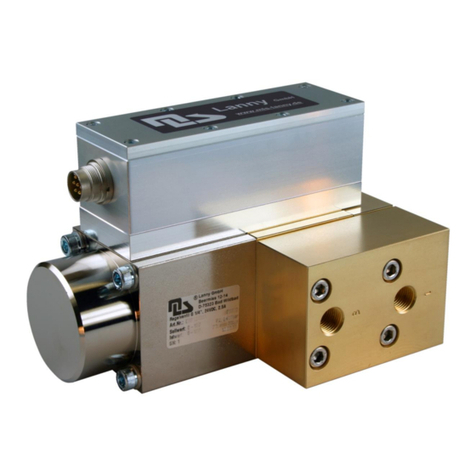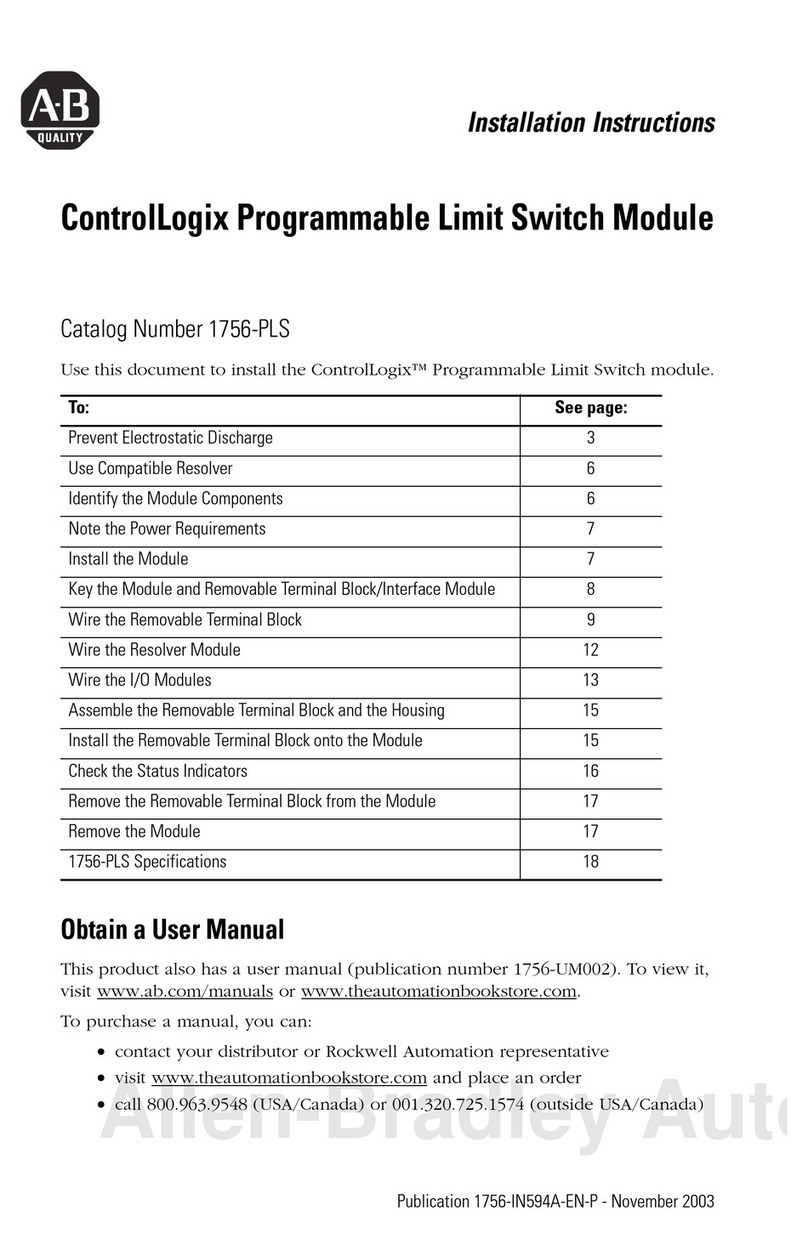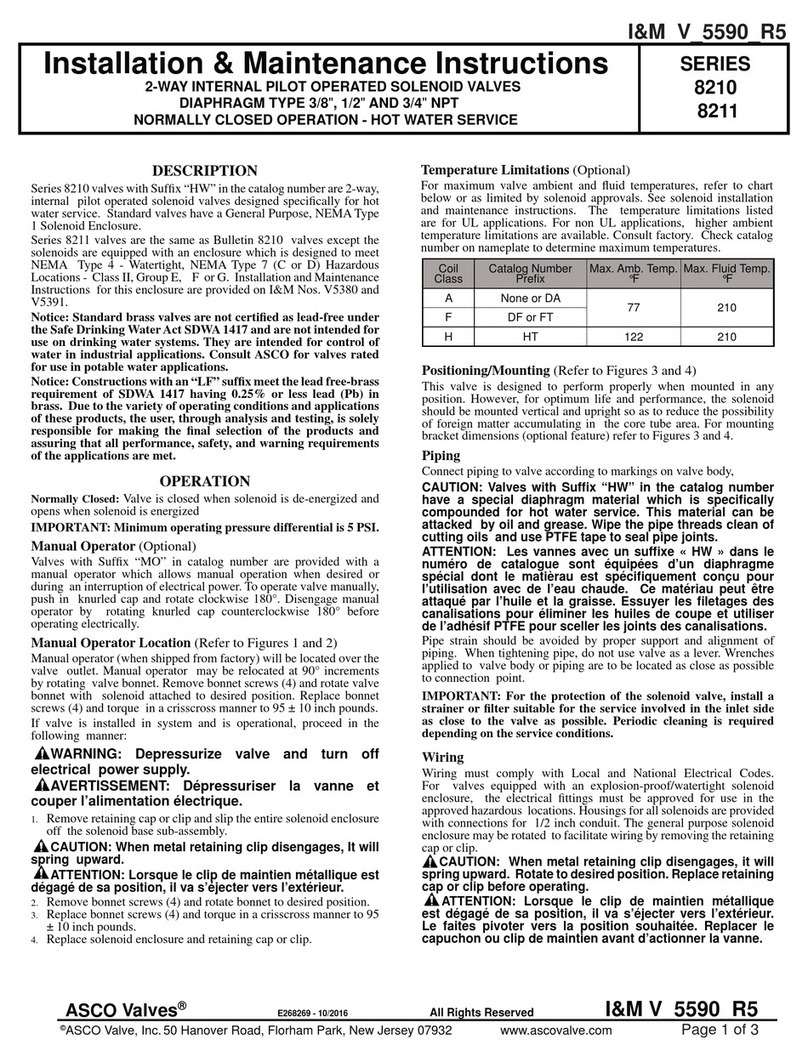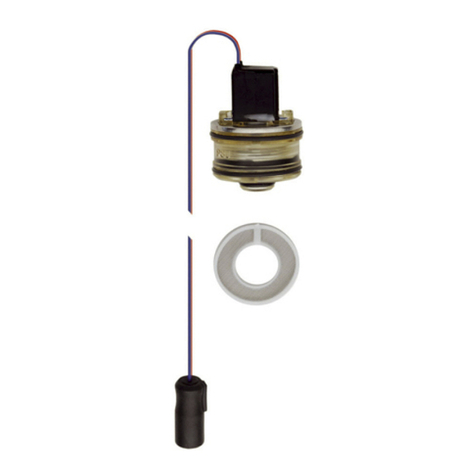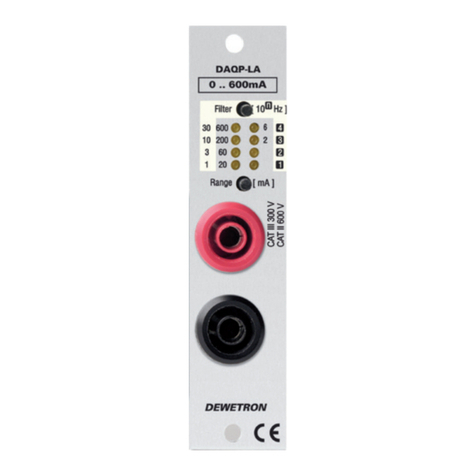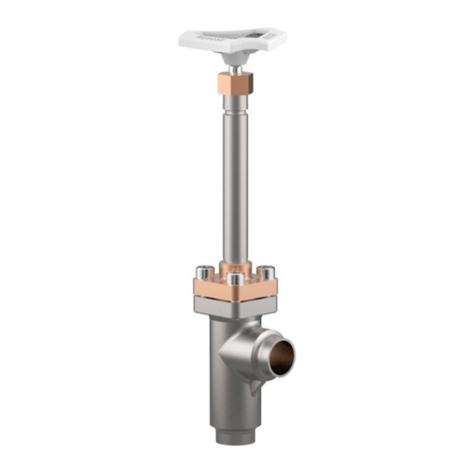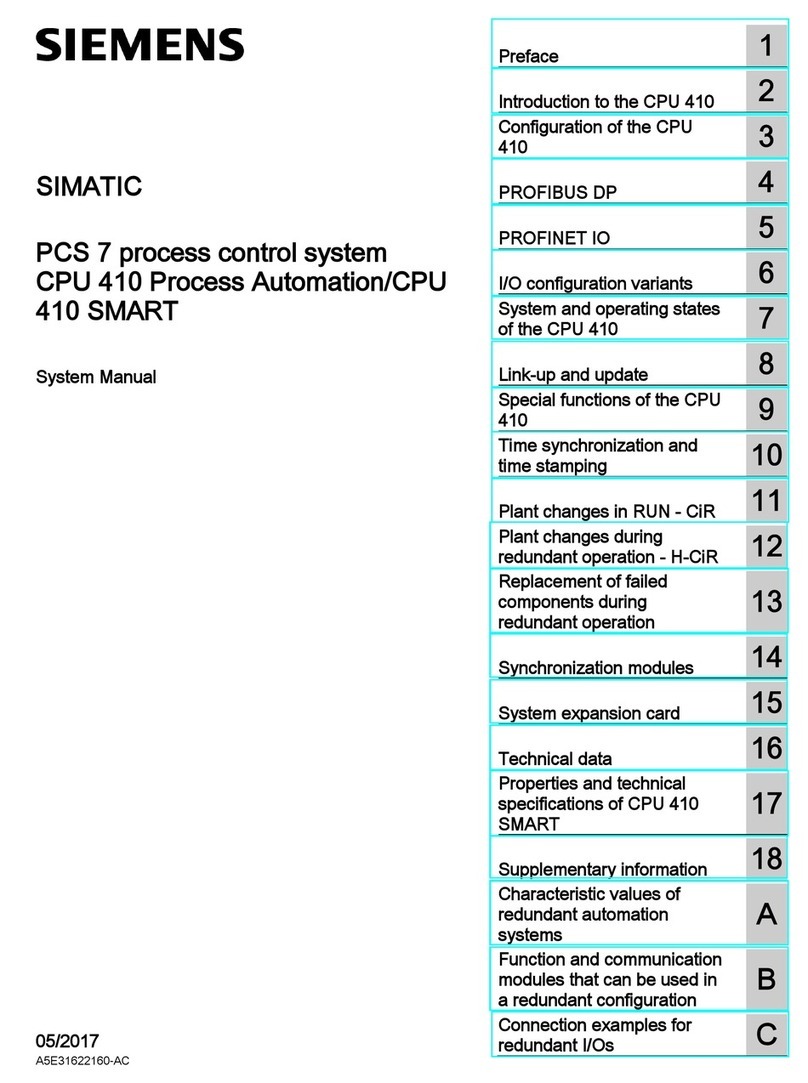
Step-by-step P/P + Aut Sensors User Present Sensor Test
1) Step-by-step ( ip 1 and 2 OFF)
The electronic control unit has a cyclic "Step-by-Step" logic,
whose operation depends on the type of radio control
associated with it (see operation with radio control with 1-2-3
buttons).
2) Step-by-step + Aut. Sensors ( ip 1 ON and ip 2 OFF)
The electronic control unit allows the "Step-by-Step" operation
as described above, with the addition of the automatic control
of the Wind and Rain sensors. After the activation of one of the
two sensors, once the disturbance is over, the electronic
control unit controls the downward movement of the sun shade
after 5 minutes.
3) Manually-controlled ( ip 1 OFF and ip 2 ON)
Using the radio control the “User present” operating mode can
be obtained, i.e. the control must be constantly enabled so that
the blind or shutter can be moved as necessary. The
movement stops when the control is released.
4) Sensor Test ( ip 1 and 2 ON)
The electronic control unit allows to check the sensor operation
and the correct rotation direction upon installation; we advise
that you place the shade in intermediate position in order to
verify the confirmation movements during the tests.
Warning after you have tested the sensors, restore the Dip 1
and 2 in the desired operation mode.
Anemometer : manually turn the Anemometer blades; at the
same time, the control unit will cause an upward movement
lasting 5 seconds.
Sun sensor : turn the VR1 trimmer as far as possible in a
clockwise direction (in the + position); at the same time, the
control unit will cause the SUN LED to light up and there will be
a downward movement lasting 5 seconds. Turn the VR1
trimmer in an anticlockwise direction (in the – position); at the
same time, the control unit will cause the SUN LED to switch
off and there will be an upward movement lasting 5 seconds.
Rain sensor : get the sensitive part of the Rain Sensor wet; at
the same time, the control unit will cause the RAIN LED to light
up and there will be an upward movement lasting 5 seconds.
When you have completed the test, make sure you have dried
the sensitive part of the rain sensor before using the control
unit in the normal operation mode.
PROGRAMMING BUTTONS AN IN ICATOR LE S
SEL button: selects the type of function to store; selection is
indicated by the LED flashing. The desired function can be
selected by pressing the button repeatedly. The selected
function remains active for 15 seconds (flashing LED) following
which the control unit returns to its original status.
SET button: programmes the function that has been selected
using the SEL. Key.
Indicator LE s
LED on option stored.
LED off option not stored.
Flashing LED option selected.
---------------------- MAIN MENU -----------------
Reference LE LE Off LE On
1) CODE No code TX Pgm code
2) T. MOT. Motor time 2 minutes Pgm motor time
3) WIND SPEED Wind safety 25 km/h Pgm. Wind safety
4) SUN SENSOR Sun sensor = OFF Sun sensor = ON
5) RAIN SENSOR Rain sensor = OFF Rain sensor = ON
6) SUN Sun Presence = No Sun Presence =
Yes
7) RAIN Rain Presence = No Rain Presence =
Yes
8) R. HEAT R. Heat = No R. Heat = Yes
1) CO E ( Radio control programming )
Programming using a 1- or 2-button radio control:
To programme the transmission codes in the radio control,
proceed as follows press the SEL key; the CODE LED begins
to flash. Send the first preselected code using the relevant
radio control at the same time; when the CODE LED begins to
flash rapidly send the second code to be stored. The CODE
LED will remain lit and the programming will be complete. If the
second code is not sent within 10 seconds the control unit exits
the programming stage, selecting the function using a single
button on the radio control. If you have stored 10 codes and
you repeat the programming operation, all the indicator LEDs
will start flashing extremely rapidly to indicate that no more
codes can be stored.
Programming using a 3 button radio control from the
“BeFree" series.
The control unit allows you to store the whole “BeFree” radio-
control by programming only the UP button.
To programme the “BeFree” radio-control codes, follow this
procedure press the SEL key; the CODE LED begins to flash.
Press the UP key of the desired radio control at the same time;
at that moment, the CODE LED will remain lit and
programming will be complete. If all of the possible 10 radio
control codes have been stored and you repeat the
programming operation, all indicator LEDs will start flashing
very rapidly to indicate that no new codes can be stored.
Deleting the codes To delete all transmission codes
stored in the memory, proceed as follows press the SEL
button; the CODE LED starts flashing. Then press the SET
button; the CODE LED switches off and the procedure is
complete.
2) T. MOT. ( Motor Timer Programming )
The control unit comes with a motor power supply time of two
minutes (T. MOT. LED OFF).
The motor time must be programmed when the shutter is down
and in the following way
Press the SEL key until the T. MOT LED key flashes, then hold
down the SET key; the shutter will begin to move upwards.
Once the desired position has been reached, release the SET
key – at this very moment, the motor time will be stored and
the T. MOT LED will remain lit.
If you are using an automation which has a stop limit, we
recommend that you set a time which exceeds the stop limit of
the shutter by a few seconds.
If you want unlimited motor time, perform the same
programming procedure, holding down the SET key for less
than two seconds; the T. MOT LED will remain lit and the
unlimited time function will be set. The operation may be
repeated if a mistake is made during programming.
3) WIN ( Wind Safety Threshold Programming )
Displa ing the programmed wind threshold
The wind safety threshold may be displayed in the following
way use the SEL key to navigate to the WIND LED position;
the LED will double-flash the same number of times as the
stored wind safety threshold (each WIND LED double-flash
corresponds to an increase of 5 km/h), (for example 5 WIND
LED flashes = 25 km/h).
Wind safety threshold selection from 5 to 40 km/h
The control unit comes with a default wind safety threshold
setting of 25 km/h (WIND LED OFF).
The wind safety threshold may be programmed in the following
way use the SEL key to navigate to WIND LED, then press the
SET key to start the programming procedure At the same time
the WIND LED will begin to double-flash (each double-flash of
the WIND LED corresponds to an increase of 5 km/h); press
2 Rev. 1.2 31/01/08




